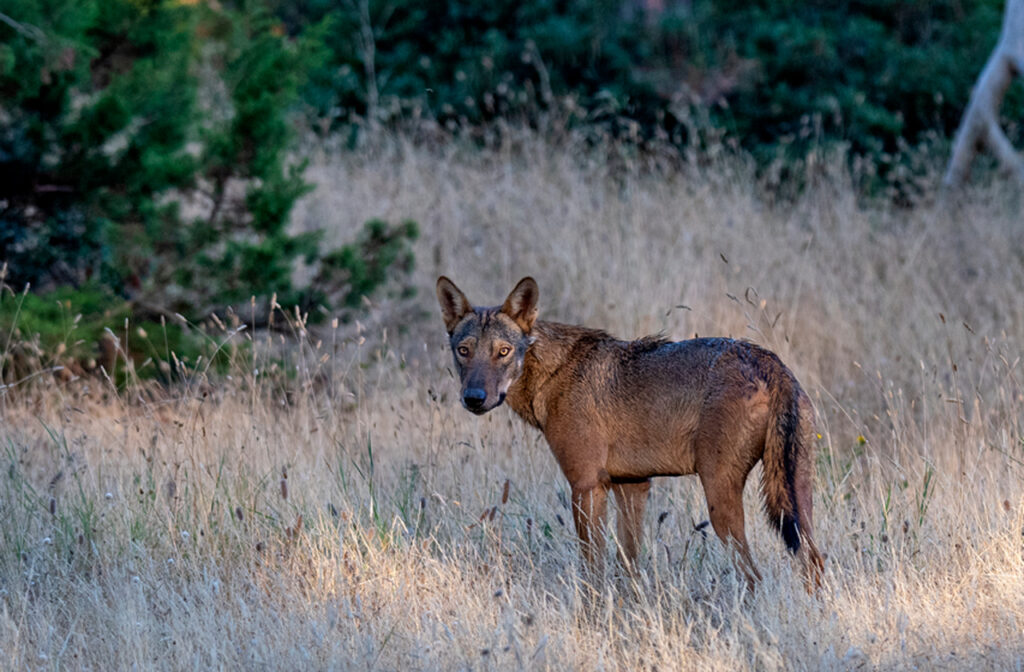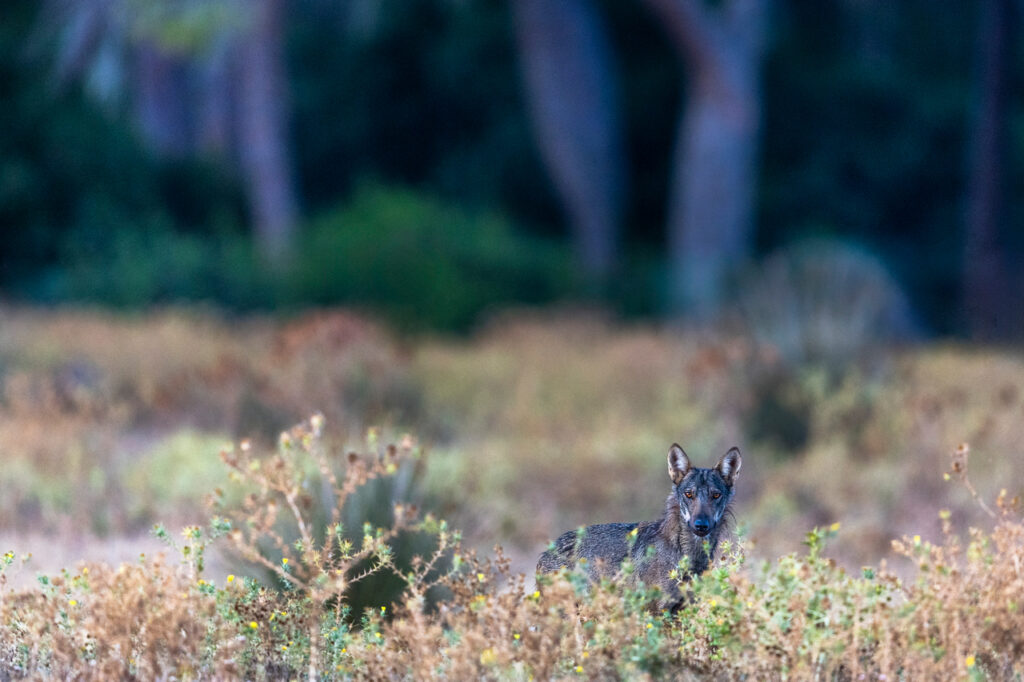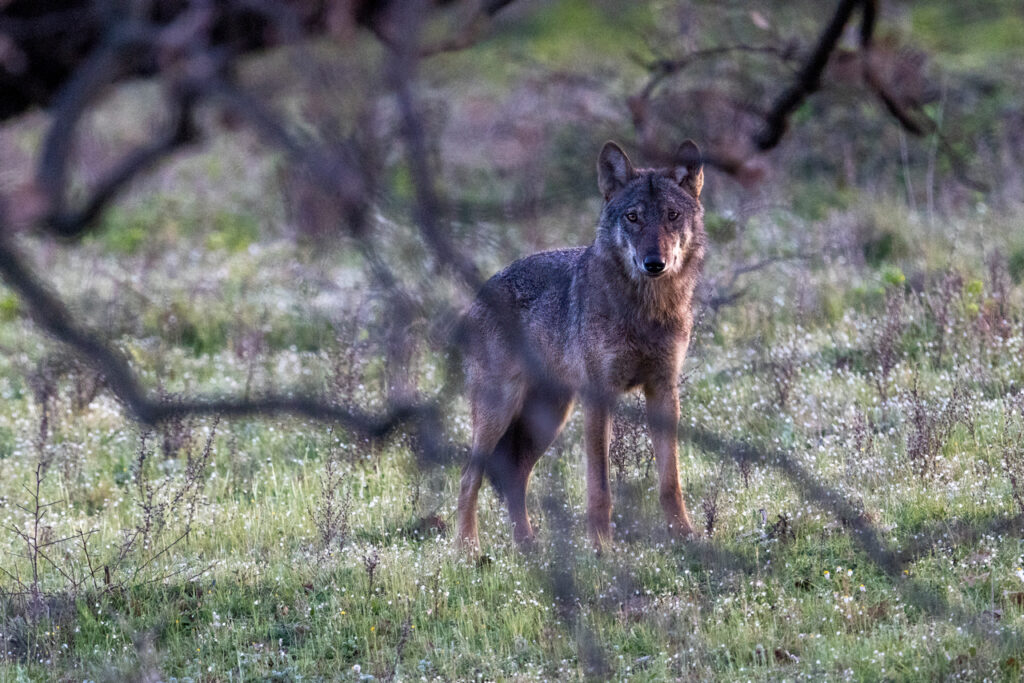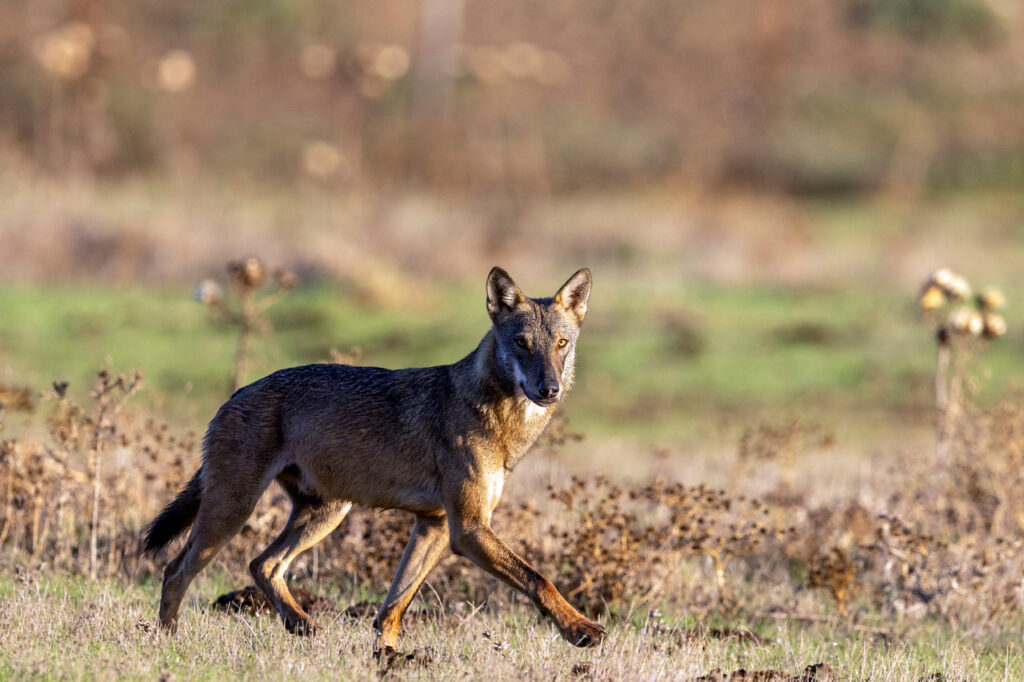A spontaneous return
After many decades of absence, wolves have returned to the Maremma Park territory. First in 2003 some individuals hybridized with the dog, which later disappeared, then in 2015 a first stable pack, then a second in 2017, and today there is also a third. The wolves naturally returned on their own, although we don’t know exactly where from. Perhaps they followed that great ecological corridor which is the banks of the Ombrone river, which connects the Tyrrhenian coast to the Apennines. In fact, here the last Italian wolves survived, which after centuries of ferocious and relentless hunting, were reduced in the Seventies to no more than a hundred between Tuscany, Abruzzo and Calabria.
Since then things have changed because the wolf has become a species protected by law. But above all because over the last few decades enormous territories in the hills and mountains have been abandoned by agriculture and wild breeding, and nature – including wolves – is taking them back. Biology did the rest, because the wolf is extremely adaptable to the most diverse environments, has many puppies, and spreads easily. The one- or two-year-old young move away from the herd and can travel tens or even hundreds of kilometers in search of new territories, where with other young people of the opposite sex they will form new herds.
As in the Maremma Park, in fact, wolves have returned to live permanently in about half of the national territory, wherever there are woods and large prey, but they have adapted to living even in environments where the human footprint is strong. Today there are herds even in Salento and the Po Delta, as well as on the outskirts of large cities such as Rome. According to estimates from the first national census, in 2022, coordinated by the Higher Institute for Environmental Protection and Research, around 3300 wolves live in Italy. It would therefore have been strange if they had not returned to the Maremma Park, where they can find a great abundance of prey, and where they are followed and studied by researchers from the University of Siena, coordinated by prof. Francesco Ferretti.
The rebalancing of the ecosystem
The return of the wolf to the Maremma Park is good news. Today, depending on the season, there are between 15 and 25 wolves and they play a previously discovered role, that of predators at the top of the food chains. In fact, the wolf eats mainly large mammals such as wild boars (about 45% of its prey) and fallow deer (30%), but also roe deer and nutria (5-7% each). The abundance of these prey means that only 4% of its diet in the Park is made up of domestic livestock. The remaining 7% of the diet consists of wild fruits.
The return of the wolf has changed the dynamic balance of the ecosystem, where each species is linked to the others by very complex relationships. Compared to the past, for example, the fallow deer are more active during the day, when the wolf does not go out hunting, and some preliminary studies suggest that the wild boars roam in larger groups, to better defend themselves, while the fox has taken advantage of this because it it can also feed on the remains of the carcasses of its prey.
However, the most important effect of the completion of food chains is the progressive rebalancing of the ecosystem. In the absence of predators, the ungulates become too numerous and the vegetation suffers, especially the trees and undergrowth plants, which struggle to renew themselves. For this reason, in the Park as in most protected areas, ungulates must be kept under control every year through selective culling. Since the wolf returned, however, interventions to contain wild boars and fallow deer in the Maremma Park have clearly decreased. The hope is that after the readjustment of herbivore populations, there will also be a recovery of vegetation and plant biodiversity, and that containment interventions may be increasingly limited.
Almost a ghost
Despite being such a prominent presence, almost no one ever sees wolves. To achieve this, the photographer Alberto Pastorelli, who took the photos on this page, took five years, with many dozens of stakeouts at dawn and only with the help of powerful telephoto lenses. Even researchers who spend weeks at a time in the Park to study them, even frequenting areas closed to the public, almost never see them. In fact, during the day, wolves remain well hidden in the most inaccessible areas, they hunt from dusk to dawn, and carefully avoid humans, as do porcupines, badgers and wild cats. So how do you study them?
To see them there are only around 60 camera traps, including night vision ones, scattered throughout the Park, which shoot short video clips when an animal approaches. For the rest, we need to study them starting from the traces they leave: footprints, but above all excrement. Every month, researchers travel 120 kilometers of trails to find them. Since 2015 they have collected over 3000 samples, carefully cataloged and stored in large freezers, and then analyzed in the laboratory to recognize the prey used and determine the diet. From the samples in the best state of conservation it is then possible to extract the animal’s DNA to determine its sex and identify it “personally”.
Us and the wolf
The real wolf is so elusive, the imaginary one seems omnipresent. In fact, the wolf is not an animal like the others, because it carries with it an enormous mythological baggage, very often born from the aversion of shepherds who see their animals torn to pieces. It is therefore normal that someone, having heard so much about the “bad wolf”, at the idea of finding themselves in a forest with a real wolf wonders if it could be dangerous.
Historically, there have been attacks by wolves on humans in Italy, although they were mostly due to animals suffering from rabies, a disease that has been eradicated in Europe. However, since the 19th century, when it began to be hunted with rifles, there have been practically no more attacks on human beings because wolves have learned to stay away from us. Based on international data, however, the probability of being attacked by a wolf is so low that it cannot even be calculated, certainly much lower than that of being killed by wasps, a viper, or your dog.
Naturally, even among animals, as among human beings, there can be individuals who are more aggressive than others, and for this reason it is always best to avoid situations that allow wolves to become familiar with us and become confidants. This could happen in certain conditions with young people, who are naturally more curious, or with older specimens, elderly individuals or those kicked out of the pack who are no longer able to get food on their own and come closer to look for rubbish or picnic food. We must therefore never accustom animals such as wolves (or any other wild animal) to obtain food from people or our waste.
In the very rare cases in which a wolf has begun to lose its fear of man and demonstrate aggressive behavior, the specimen in question is still captured and removed, to be kept in captivity.
Moral of the story: in the unlikely event that we happen to spot one, don’t get close, don’t move away, and let’s enjoy the show while it lasts, probably just a few moments. And let’s consider it an extraordinary gift.





